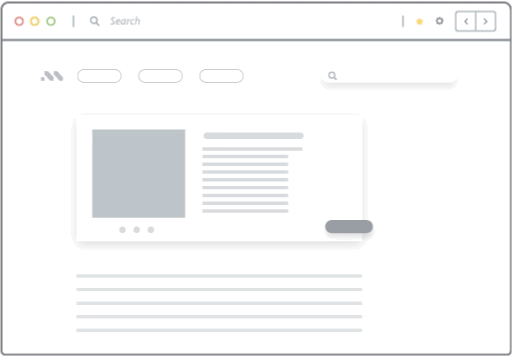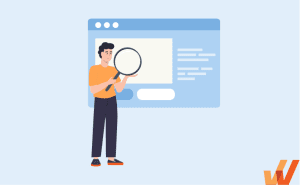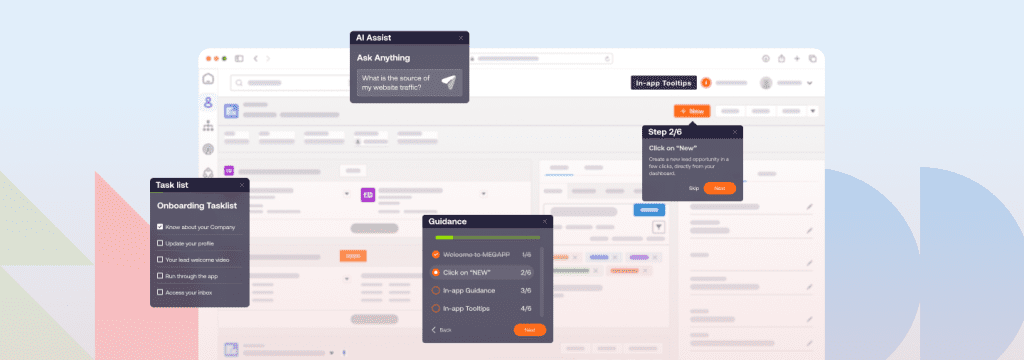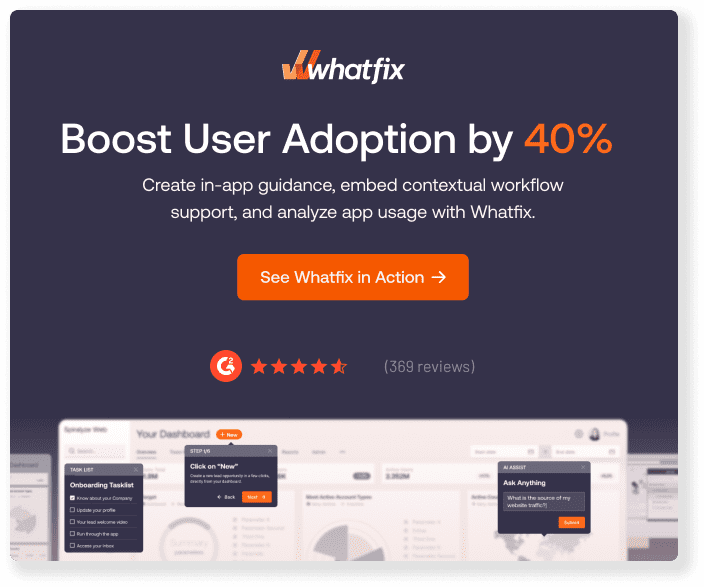LMS integration refers to connecting your Learning Management System with other enterprise systems such as content authoring tools, single sign-on (SSO) platforms, HR systems, analytics engines, and digital adoption tools, to create a seamless, data-rich learning ecosystem. In 2025, organizations that effectively integrate their LMS are better equipped to deliver personalized training, reduce administrative burden, and align learning with real business outcomes.
Why this matters now: the global corporate LMS market is projected to reach USD 43.95 billion between 2023 and 2028, with a staggering CAGR of 31.9%, reflecting how rapidly companies are investing in integrated learning platforms to support agile, scalable development.
For L&D professionals, LMS integration transforms learning from a siloed function into a strategic lever, enabling real-time access to learning assets, seamless learner access, automated provisioning, and unified reporting across systems. This shift dramatically accelerates time-to-proficiency, improves compliance, and generates metrics that resonate with business leaders.
In this article, you’ll learn what LMS integration is and why it matters today, gain clarity on the leading integration standards and their applications, explore the organizational benefits, walk through practical steps for executing an integration project, and see how Whatfix enhances the value of your LMS.
What Is an LMS Integration and Why It Matters for Enterprises?
A Learning Management System (LMS) integration connects your LMS with other enterprise applications such as HR platforms, CRM systems, single sign-on (SSO) providers, collaboration tools, and content authoring solutions to create a unified learning ecosystem. Instead of operating as a standalone platform, an integrated LMS becomes part of the organization’s digital infrastructure, ensuring training programs are accessible, consistent, and measurable across the business.
For enterprises, this integration matters because learning is no longer confined to the LMS itself. Employees expect seamless access to training within the systems they already use whether that’s HR software for compliance courses, collaboration platforms for peer learning, or CRM tools for sales enablement. Without integration, L&D teams face fragmented data, poor user experiences, and manual administrative overhead that slows down adoption.
When done right, LMS integration enables:
- Simplified learner access through single sign-on and automated provisioning.
- Centralized tracking and reporting across multiple tools and platforms.
- Personalized training experiences delivered in the flow of work.
- Clear alignment with business outcomes by linking learning data to performance metrics.
Key Standards and Protocols That Power LMS Integrations
Behind every effective LMS integration are technical standards and protocols that make systems interoperable, secure, and scalable. For L&D and HRIT leaders, understanding these standards is critical to choosing the right LMS and ensuring smooth connections with the rest of the enterprise tech stack.
- SCORM (Sharable Content Object Reference Model): SCORM is the most widely used eLearning standard for packaging and delivering online training content. It allows content created in authoring tools to be uploaded and tracked within any SCORM-compliant LMS. While still dominant, SCORM has limitations in tracking modern, informal, or offline learning experiences.
- xAPI (Experience API) and Learning Record Store (LRS): Also known as Tin Can API, xAPI is a modern successor to SCORM. It records learning experiences in the form of “statements” (e.g., User A completed Module X) and stores them in a Learning Record Store (LRS). This enables organizations to track diverse learning activities, on mobile devices, in simulations, or even outside the LMS, providing a richer picture of how employees learn.
- LTI 1.3 and LTI Advantage: Learning Tools Interoperability (LTI), maintained by 1EdTech (formerly IMS Global), enables LMSs to connect securely with external tools like virtual classrooms, assessment engines, and video platforms. LTI 1.3 and the newer LTI Advantage framework add enhanced security (OAuth 2.0, JSON Web Tokens) and services such as rostering and grade return, making it easier to integrate third-party learning applications.
- Single Sign-On (SSO): SSO protocols such as SAML (Security Assertion Markup Language) and OpenID Connect ensure users can log in to the LMS with the same credentials they use across the organization. This improves learner adoption by removing login friction, while strengthening IT security through centralized identity management.
- SCIM (System for Cross-domain Identity Management): SCIM is a standard for automatically provisioning and deprovisioning user accounts across systems. When integrated with the LMS, SCIM ensures that new hires, role changes, or departures are instantly reflected in user access and course enrollments. This reduces admin overhead and improves compliance.
Benefits of LMS Integrations for Organizations
An LMS on its own can manage learning content and track completions, but without integration it often becomes another silo in the enterprise tech stack. Connecting your LMS with other systems unlocks significant business benefits by streamlining administration, improving learner experiences, and linking training directly to organizational outcomes.
- Seamless access and better learner adoption: LMS integrations with SSO and HR systems remove friction for employees. Instead of remembering multiple passwords or waiting for manual account setup, learners gain instant access to relevant courses as soon as they join or change roles. Easier access leads to higher engagement and course completion rates.
- Automated administration and reduced costs: SCIM and HRIS integrations automate user provisioning, enrollment, and role assignments. This reduces manual effort for L&D and IT teams, cuts administrative costs, and minimizes the risk of errors, especially valuable for enterprises with large or frequently changing workforces.
- Richer analytics and business alignment: By connecting the LMS with BI tools, CRMs, or digital adoption platforms, organizations can measure how training influences real business KPIs such as sales performance, compliance adherence, and time-to-proficiency. This transforms learning data from a reporting requirement into actionable insights for executives.
- Personalized and contextual learning experiences: Integrations with collaboration tools, content libraries, and DAPs allow employees to access training directly in the flow of work. Whether it’s surfacing compliance modules in an HR portal or embedding product training in a CRM, contextual delivery makes learning relevant and increases learning retention.
- Stronger compliance and risk management: In regulated industries, LMS integration ensures that compliance training is automatically assigned, tracked, and reported. Integrating with HR systems means employee status changes are reflected immediately, reducing the risk of non-compliance or audit gaps.
Common types of LMS integrations and practical use cases
Enterprises use LMS integrations to connect learning with the broader digital ecosystem. Each integration type solves a specific business problem and creates measurable value for L&D, IT, and business leaders.
Single sign-on (SSO) and identity management
Integrating with SSO providers such as SAML or OpenID Connect gives employees one-click access to the LMS with their existing corporate credentials. This reduces login friction, increases adoption, and strengthens enterprise security.
Use case: A financial services firm ensures all employees automatically access compliance training through the same secure login they use for email and HR platforms.
Human resource information systems (HRIS)
Connecting the LMS with HRIS platforms like Workday, SAP SuccessFactors, or ADP automates user provisioning and course enrollment. When an employee joins, changes roles, or leaves, the LMS updates instantly.
Use case: A healthcare organization assigns mandatory HIPAA training to new hires on their first day without manual setup, ensuring compliance from the start.
Customer relationship management (CRM)
Integrating with CRMs like Salesforce or HubSpot makes it possible to embed sales enablement and product training directly within the CRM environment. This ensures learning happens in the flow of work.
Use case: A SaaS company delivers just-in-time product updates to sales teams inside Salesforce, shortening ramp-up time for new features.
Content authoring tools and libraries
Integration with authoring tools such as Articulate, Adobe Captivate, or Camtasia allows L&D teams to push SCORM or xAPI packages directly into the LMS. Connections to content libraries like LinkedIn Learning or Coursera expand available resources.
Use case: An enterprise training team publishes new microlearning modules from Articulate directly into the LMS for immediate employee access.
Collaboration and communication tools
Linking LMSs with Microsoft Teams, Slack, or Zoom embeds training into employees’ daily workflows. It also enables reminders, notifications, and live virtual training within collaboration platforms.
Use case: A global enterprise uses Teams integration to deliver reminders for compliance course deadlines and host virtual training sessions.
Learning record stores (LRS) and analytics platforms
xAPI and LRS integrations extend tracking beyond the LMS, capturing learning experiences from mobile apps, simulations, or even offline activities. BI integrations with Tableau or Power BI allow learning data to be tied directly to business KPIs.
Use case: A manufacturing firm uses xAPI to track safety training completed on tablets in the field and visualize results in Power BI dashboards for executives.
Digital adoption platforms (DAPs)
Integrating a digital adoption platform like Whatfix with your LMS brings contextual, in-app training into enterprise applications. It bridges the gap between formal learning and hands-on practice by embedding walkthroughs, task lists, and self-help directly into workflows.
Use case: An ERP owner provides employees with in-app guidance for new SAP processes, while reporting back to the LMS for completion tracking.

How to plan and execute a successful LMS integration project
Integrating an LMS is not just a technical exercise, it’s an organizational change initiative that requires planning, collaboration, and governance. A structured approach reduces risks, shortens timelines, and ensures the integration delivers business value.
- Assess integration needs and readiness: Start by identifying which systems need to connect with the LMS and why. Consider employee experience, compliance requirements, and business outcomes. Conduct a gap analysis between current capabilities and desired future state.
- Define clear goals and success metrics: Set measurable objectives that go beyond “connecting systems.” Goals should focus on outcomes such as reducing manual admin time, improving course completion rates, strengthening compliance tracking, or aligning learning data with performance metrics.
- Map data flows and security requirements: Work with IT to determine how user data, course completions, and analytics will flow between systems. Pay close attention to data privacy, GDPR or HIPAA compliance, and role-based access controls. Integration should enhance security, not compromise it.
- Choose integration standards and tools: Select whether SCORM, xAPI, LTI, SSO, or SCIM (or a combination) will be used, depending on use cases. Evaluate vendor APIs and pre-built connectors to simplify the process. Ensure that your LMS supports modern standards to avoid lock-in.
- Test integrations in a sandbox environment: Before rolling out enterprise-wide, pilot the integration with a smaller group. Validate that user provisioning works, data syncs correctly, and reports generate as expected. Testing prevents costly errors at scale.
- Roll out with communication and training: Launch the integration in phases, accompanied by clear communication to employees and admins. Provide quick-start guides, FAQs, and training for those who will manage or support the system.
- Monitor, measure, and optimize: After deployment, continuously track performance against your original goals. Use LMS analytics, BI dashboards, or DAP insights to identify issues, measure adoption, and refine the integration for long-term impact.
How Whatfix enhances the value of your LMS through integration
An LMS manages structured training, but much of employee learning happens outside formal courses, in the flow of work. Whatfix bridges that gap by complementing your LMS with contextual, in-app learning experiences and analytics that make training more effective and measurable.
With Whatfix, L&D teams can:
- Export SCORM and xAPI packages so Whatfix content integrates seamlessly with your LMS, ensuring all training is tracked in one place.
- Surface LMS content directly in enterprise applications, allowing employees to access mandatory training, microlearning, or knowledge resources without leaving their workflows.
- Provide in-app guidance and simulations through walkthroughs, task lists, and sandbox environments, reinforcing formal LMS training with real-world practice.
- Enable self-service learning by integrating LMS modules into Whatfix’s Self Help, giving employees on-demand access to resources alongside their daily tasks.
- Unify analytics by combining LMS data with Whatfix Guidance Analytics to measure adoption, skill application, and overall business impact.
For enterprises, this means training doesn’t stop at course completion. Whatfix turns learning into an ongoing, embedded experience that accelerates time-to-proficiency, improves compliance, and maximizes ROI on both the LMS and broader digital investments.
LMS Integration FAQs
Ready to enhance your LMS with integrations but still have some questions? We have answers.
What are the technical aspects of LMS integrations?
There are some technical requirements necessary for making LMS integrations possible. These include:
- SSO: Single sign-on makes it quick, easy, and safe for employees to access multiple platforms at once. The SSO makes it possible for your team to use just one set of login credentials to access all integrations and platforms and mitigates the risk of data breaches.
- APIs: An application programming interface (API) is used to share data and information between tools. Many tools offer their own APIs to make connecting your favorite platforms as easy as possible.
- Webhooks: A webhook is an automated message sent from one application to another when an event is triggered. They are used to let an application know there is new information to collect and tell them where to find it.
What is SCORM?
SCORM (Sharable Content Object Reference Model) refers to technical standards that accompany eLearning software. SCORM is used to ensure LMS and other learning platforms all work from the same code guidelines so they can easily connect and work together. It’s important to abide by SCORM protocols so your LMS can distribute, collect, and create new content as efficiently as possible. You can leverage a SCORM authoring tool to ensure your content is SCORM-compliant.
What is the difference between SCORM and xAPI?
SCORM (Sharable Content Object Reference Model) is an older standard that packages eLearning content and tracks basic data such as course completions, scores, and time spent within an LMS. xAPI (Experience API), also called Tin Can, is a newer standard that tracks a much wider range of learning experiences, including mobile, simulations, informal learning, and offline activities, by storing detailed activity statements in a Learning Record Store (LRS). In short, SCORM is limited to LMS-based training, while xAPI captures learning wherever it happens.
How does SSO improve LMS adoption and security?
Single sign-on (SSO) allows employees to access the LMS with the same corporate credentials they use for other enterprise systems. This improves adoption by reducing login friction and ensuring learners can easily reach training content. From a security perspective, SSO centralizes identity management, enables stronger authentication, and ensures consistent enforcement of access policies, reducing the risk of password fatigue, duplicate accounts, and compliance gaps.
How can you measure the ROI of LMS integrations?
The ROI of LMS integrations can be measured by linking training data to business outcomes and efficiency gains. Key metrics include reduced administrative hours through automated provisioning, higher course completion rates from simplified access, faster time-to-proficiency for new hires, improved compliance tracking, and lower support costs from fewer access or data errors. Advanced analytics can also connect learning activity to performance indicators like sales results, customer satisfaction, or operational productivity, providing a clear line between integration and business impact.
Training Clicks Better With Whatfix
A Digital Adoption Platform is one of the most valuable ways to extend the impact of your LMS. By integrating Whatfix with your learning ecosystem, employees receive real-time, in-app guidance and personalized support that turns training into action. Instead of struggling to find or apply what they learned, users are guided step by step inside the tools they already use, reducing friction, improving engagement, and accelerating adoption of both the LMS and broader digital initiatives.
Ready to transform how your workforce learns? Click here to schedule a free demo with us today!








